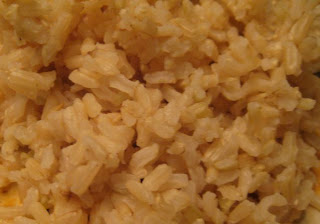
What’s for dinner? I don’t know . . . but my kids do!
You can teach your kids to take on the responsibility of cooking dinner once a week. Preparing a meal can be a very practical and empowering learning experience for children! Young ones can work with you to do the planning and be your kitchen helper. As they grow, they can use you as an assistant. Eventually, by 10 years old, they can prepare a simple meal without your help. What a valuable skill!
This takes a little patience on Mom’s part, as every good thing does. There is fear that you won’t get a decent meal. Or that you’ll end up with Cheetos as one of the raw veggies. I have my children sit down and plan their meals and make up a groceries needed list. Then I do the grocery shopping so that all the ingredients are ready and waiting. (And so I can screen out the Cheetos!)
Before we get out the first pan, I use this chart to teach my children what a balanced meal looks like. Just glancing at it spurs the menu ideas, and help kids learn how to create a dinner meal and include all those nutritious vegetables that might get left out otherwise.
 Here’s how to do easy dinner planning:
Here’s how to do easy dinner planning:
1- Pick a complex carbohydrate:
potato, whole grain bread, whole grain pasta, cornmeal, brown rice, wild rice, tortillas, barley, oats, quinoa, etc.
2- Pick a protein:
meat, fish, poultry, beans, eggs, nuts, cheese, yogurt, etc.
3- Pick a veggie to cook:
broccoli, green beans, onions, green pepper, cauliflower, cabbage, asparagus, peas, yellow squash, zucchini, beets, winter squash, mushrooms, yams, artichoke hearts, etc.
4- Pick 2 or more raw veggies for a salad or raw veggie tray (crudites):
avocado, carrots, green onions, radishes, jicama, celery, cucumbers, lettuce, sprouts, spinach, cabbage, broccoli, cauliflower, tomatoes, sweet red peppers, snap peas, etc.
If you are making a soup or casserole, foods #1- 3 (carbs, protein, cooked veggies) are included, making things simple. All you have to add is the raw veggie tray or a fresh salad and you are done!
We eat lots of fresh fruit too, in its raw form—at breakfast, lunch, snacks or as a dessert. For an extra-hungry teenage boy, you can set bread and butter at the table for extra carbs to fill him up.
Besides teaching our Balanced Meal chart, I prepare a “white meal” on my dinner night to teach my kids about eye appeal. I cook white fish, mashed potatoes, cauliflower, or a salad from the inner part of a light green cabbage, plus some pale-looking inside celery sticks. We have milk to drink. And I serve it on a white plate if I can. One look at this dinner and everyone understands how important color is to make things appetizing! My very “white meal” is nutritious and balanced, but not so appealing.
So, let’s try creating a balanced meal:
1- Pick a carb
2- Pick a protein
3- Pick a veggie to cook
4- Pick 2 raw veggies
Here’s one done for you—balanced and visually appealing:
1- Carb: Brown rice with a handful of wild rice added
2- Protein: Chicken
3- Cooked Veggie: Broccoli
(if you mixed #1, 2, and 3, and just added sauce and spices, you’d have a good casserole!)
4- Raw Veggies: Spinach salad with cucumbers
And another:
1- Carb: Corn tortillas
2- Protein: Ground beef, cheese
3- Cooked Veggie: Onions, Green Pepper, Tomato sauce
(hey, this sounds like enchiladas!)
4- Raw Veggies: cauliflower, radishes, jicama, carrot and celery sticks with dip
And a vegetarian version:
1- Carb: Red Potatoes
2- Protein: Milk, Cheese
3- Cooked Veggie: Broccoli
(how about baked potatoes topped with cheesy sauce with cooked broccoli florets)
4- Raw Veggies: Romaine lettuce salad with tomatoes and sprouts
And a raw salad meal:
1- Carb: Crusty wheat rolls
2- Protein: Cashews
3 + 4- Veggies, all raw this time—salad greens, grated carrot, sprouts, avocado
slices, and grapes just for yummy
Play the “Making Dinner” game with your kids to teach them about balancing meals. Just brainstorm the carbohydrates you normally eat, and draw each one on a paper, fold and put in a bowl labeled “carbs”. Do the same with proteins and veggies. To plan a meal, have a child pick out a paper from the bowl: 1 carb, 1 protein and 3 veggies (two to be eaten raw) and arrange these on a plate. Discuss what menu item could be made from the papers they drew out: soup, casserole, sandwich, pizza, etc. To make the game silly, add a few not-so-delectable items, drawing one on each paper to add to each bowl, such as: sprouting potato peelings, egg shells, spider webs, moldy bread, a rotten apple, worms, etc.
Challenge your older kids with a “Limited Ingredient Project”! My daughter arrived at her college cooking class to receive a grocery sack from her professor with just a few ingredients inside. Her assignment was to prepare a nutritious dinner out of them. It’s fun to see what each innovative cook can come up with. They are allowed to use basics from the pantry: spices, condiments, flour, dressings, etc. to turn those basic ingredients into a balanced meal that tastes good! Fruit can be served as the dessert or as part of the meal.
Here are some Limited Ingredient Projects to try. Just put the ingredients in a paper bag, and hand them over to an older child to create with. This is what we mothers have to do every evening at 5 o’clock, right?!
#1
Protein-chicken thighs
Carb-noodles
Veggies (raw + cooked)-beets, green onions, spinach
Fruit-Peaches
#2
Protein-tuna fish in cans
Carb-Brown rice
Veggies (raw + cooked)-tomatoes, swiss chard, green beans
Fruit-apples
#3
Protein-eggs
Carb-Whole wheat bread
Veggies (raw + cooked)-broccoli, onions, cucumbers
Fruit-cantaloupe
You are going to work yourself out of a job, Mom. Hope you don’t feel too bad if you don’t have to come up with what to cook for dinner!



























